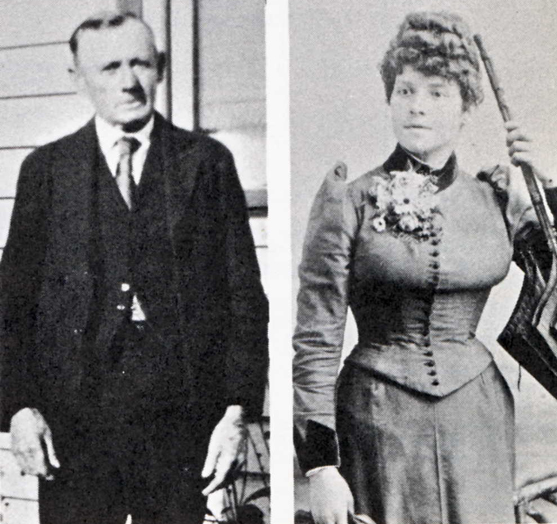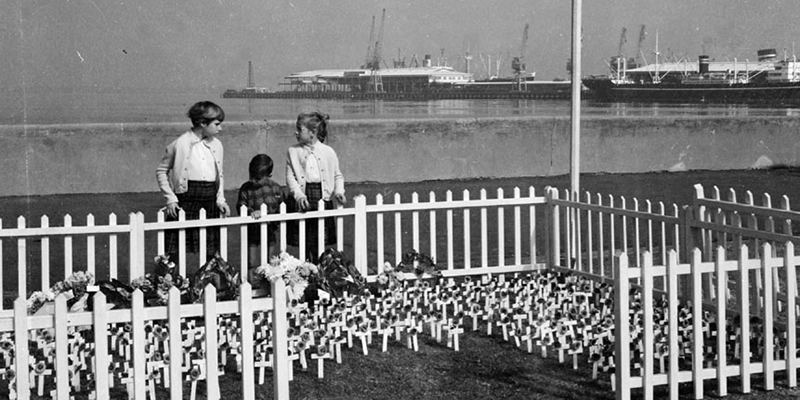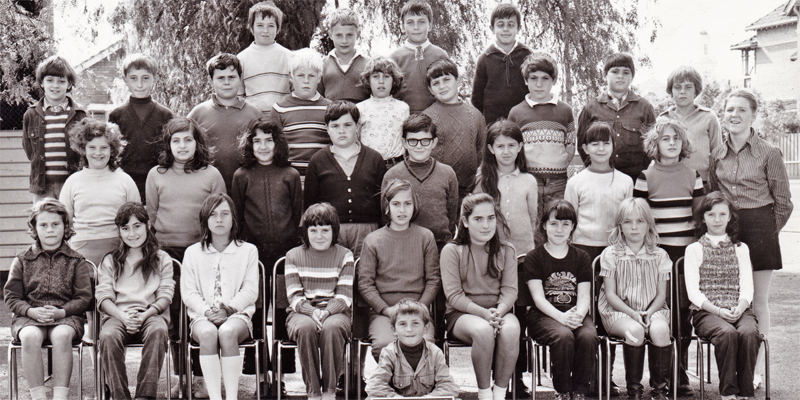Gustav Adolph (Alf) Heppner (1865 – 1958)
Ray Jelley, April 2020
Gustav Adolph Heppner was born on 24 October 1865 in Adelaide, South Australia to parents Johann Friedrich and Johanne Ernestine Heppner née Ermler and was the fourth of twelve children born to his mother by two husbands. Her second husband was Johan Carl Friedrick Schreiber who she married in 1873 after her first husband Johann was killed in 1870 in a cart accident on the Burrumbuttock Road in New South Wales about 25 kilometres north of Albury. The family had moved to the area from South Australia between 1867 and 1869. The extended Heppner family became well known farmers in this region of NSW and are mentioned frequently in the newspapers. The first mention of Gustav Adolph Heppner was in the Empire of 14 January 1874 when his claim for an ‘undefined pre-emptive lease’ at Jindera was approved.[1] Gustav was nine years old and there was, at the time, no minimum age requirement for leasing land.[2] It was common practice for families to have land leased by numerous members of the same family in order to accumulate enough acreage to operate a sustainable farm enterprise.
The next mention of G A Heppner in the newspapers was on 15 October 1886 in the Albury Banner and Wodonga Express when Gustav, now aged twenty-one applied for a wine license at a house in Gerogery, it was refused.[3] The same paper on 22 April 1887 announced that G A Heppner had, in the Sheffield Handicap foot race over 130 yards, won the fourth division heat off fifteen yards, and had then, off fifteen yards again, won the final in fourteen seconds.[4] Gustav’s running career was ‘off and running’. His name repeatedly appeared from this time onwards competing at numerous foot races throughout Victoria. In 1889 he began running under the name ‘A[lf] Heppner’, which in October of that year at the Goornong Sports meeting (north east of Bendigo), cost him the race he had just won, and the entire meeting when a fellow competitor protested that he had ‘run under the wrong name and had sent in an incorrect list of his performances’.[5] This problem followed Alf right up to the 1892 Stawell Gift, which he won off twelve yards in twelve seconds.[6] The purse was worth 115 Sovereigns or about $17,000 in 2019 currency. Alf nominated his home location as Port Melbourne when he ran in the gift, but his name did not appear in any of the Sands & McDougall directories around this time. The only link to the area that can be found is that his future mother-in-law, Elizabeth Sherman née Robb was listed as living at 112 Coventry Street, South Melbourne when her late husband, George Sherman’s probate administration was put before the Supreme Court of Victoria on 6 October 1887.[7] She had been at 59 Raglan Street on 31 March 1887 when the Affidavits of Surety were put before the court. George had died on 24 April 1886 at Mansfield, aged forty-nine. George and Elizabeth had six children, five girls and one boy. Alf’s future wife Jessie Isabella was their fifth child and born in 1872. After considering the manner in which Alf registered the location of where he was living when he nominated for running in foot races over the many years that he competed, the evidence is strong that he was living in Port Melbourne when he nominated for the 1892 Stawell Gift. This would have been also the time when he met Jessie.

Alf and Jessie were married in 1899, but by this time Jessie had had two boys, William Bernard Sherman born in 1894 and Walter Gordon born in 1897. William was born in Carlton while Walter was born in Jindera, NSW. Walter’s birth details were found in his World War I service records and in the ‘Find A Grave’ records, but not in the NSW records. They both volunteered in 1916 for service with the AIF and while William survived, Walter was killed on 9 August 1918 near Harbonnières, France, which is to the east of Villers-Bretonneux.[8]
The ‘running under the wrong name’ issue re-emerged at the beginning of 1893 when Alf was accused of running under the name of G J Jackson at a race meeting in Westbury, Tasmania, for which he won £31 over two races. The Sportsman of 24 January 1893 stated that:
The recognition of “Jackson” of Westbury fame, as A Heppner, the Stawell winner, by means of the photo sent to your office will be satisfactory news to the local peds and also to the athletic clubs. We have suffered a good deal in this colony, and especially on the west coast, by this style of game, but the great difficulty has been to prove who the suspect was. It’s little good saying he’s not the individual he represents himself to be unless you can prove who he is, and in this instance the proof seems pretty conclusive. Now the Athletic Association is formed, these “dark birds” will find they will be pretty carefully overhauled, so the lesson should be taken as a warning in future.[9]
Despite this stain against Alf’s integrity as a runner he continued to run competitively, but probably under his own name, rather than an assumed one, throughout Victoria. The reason that Alf ran under an assumed name, which gave him a distinct advantage regarding his yardage handicap, may have been as a consequence of the times. The late 1880s and early 1890s were a time of deep economic depression for Victoria and Australia in general. The boom of the gold era had passed and the banks that had been handing out money like drunken sailors finally realised their wealth was built on shifting sands and began to attempt to draw in their loans. As many had overstretched their capacity to pay, coupled with a horrendous drought, a rabbit plague, and disastrously low wool prices the borrowers were unable to pay, which in turn brought the whole economy to the brink of collapse. In this climate maybe it was the only way that Alf could earn a living. In 1897 Alf ran fourth place in the Stawell Gift.
In 1897, Alf competed at the Bendigo Easter Fair and on the second day he won the sixth heat of the Sheffield Handicap off ten and a half yards. On the third day he ran in the second heat but was placed second by six inches after starting again off ten and a half yards. He nominated his location as Melbourne that year.
Alf returned to Stawell in 1901 but fell at the end of one of the heats on Easter Monday breaking his collar bone and ‘putting out his ankle’. There was a subscription for him which raised £10 and the Stawell Athletic Club decided to send him a letter of sympathy. He was described by the Sportsmanas a ‘veteran’.[10]
Alf entered for a 120-yard race to be conducted on 3 November 1906 at the Exhibition Buildings arena titled the ‘Wren Five Hundred Carnival’. His handicap was 12 yards and this time he nominated his home suburb as Brunswick.[11]The race was deemed to be the richest foot racing carnival ever ‘on this side of the globe’, and the promoter was none other than the infamous John Wren who was given the pseudonym of John West in the prestigious semi-biography, Power Without Gloryby Frank Hardy.[12]Unsurprisingly, the purse of £500 for the feature event attracted a huge number of runners from Australian States and included a runner from New York and another from England. Alf did not win or feature in the finals so he must have been eliminated early in the heats. The final was run on Monday 12 November and was won by H Chase of Brunswick, an Australia Rules footballer. At the 1907 St Patrick’s Day meeting in Bendigo Alf ran second in the third heat of a 223-yard handicap off twenty-two yards and came second again in the second semi-final.[13]
In 1918 Alf ran at the Maryborough sports day in January and in April competed in the Stawell Gift off twenty yards.[14]He was there again in 1919 but failed to gain a place in his heat.[15]Alf competed in the Stawell Gift for the final time in 1923 aged fifty-seven, but without success.[16]In November 1925, both Alf and his son William ran at the Brunswick Carnival, and this would appear to be the last time Alf’s name was associated with competitive running.[17]
Alf’s name started appearing in the newspapers in 1913 having taken up large bore rifle shooting with the Emerald club, when he competed for the Victorian Rifle Association (VRA) medal over 300 yards.[18]The 1912 electoral roll had recorded his, and wife Jessie’s address as Upper Beaconsfield. Alf’s occupation was a carpenter. He was an accomplished rifle shooter and was frequently mentioned in the newspapers from 1913 onwards for his prowess. It was not surprising to find that both his sons, William and Walter also became accomplished riflemen in the years before the outbreak of World War I.[19]As was previously mentioned when 1916 arrived both boys volunteered for the AIF. In 1916 Jessie died aged forty-four and was buried in the Coburg Cemetery on 24 January. Alf continued to live at Upper Beaconsfield for all but the last years of his life when he was living with his son William and his wife Eleanor at 41 Pope Road in Blackburn. He died on 27 August 1958 aged ninety-two. His name is remembered in Upper Beaconsfield with a road named after him, although it is spelled ‘Hepner Road’.
If you have any information regarding Alf and Jessie’s time in Port Melbourne around 1892, please let us know.
Endnotes
[1]‘Government Gazette,’ Empire, 14 January 1874, p. 3; ‘Approved Claims for Undefined Pre-Emptive Leases,’ New South Wales Government Gazette, 13 January 1874 no. 6, p. 70.
[2]An Act for Regulating the Alienation of Crown Lands 1861 (New South Wales), 18 October 1861.
[3]‘Licensing Court,’ Albury Banner and Wodonga Express, 15 October 1886, p. 20.
[4]‘Albury Licensed Victuallers’ Demonstration,’ Albury Banner and Wodonga Express, 22 April 1887, p. 24.
[5]‘The Goornong Sports,’ Bendigo Advertiser, 31 October 1889, p. 2.
[6]‘The Easter Holidays,’ Argus, 19 April 1892, p. 5.
[7]‘George Sherman, 35/096,’ Wills and Probate, The Public Records Office of Victoria, VPRS 28/ P2 unit 224A, item 35/096 and VPRS 28/ P0 unit 427, item 35/096.
[8]‘Walter Gordon Heppner,’ Commonwealth War Graves Commission, <https://www.cwgc.org/find/find-war-dead/results?lastName=heppner&war=1>.
[9]‘The Westbury Club Doing Good Work,’ Sportsman, 24 January 1893, p.2.
[10]‘The Unemployed Difficulty,’ Ovens and Murray Advertiser, 13 April 1901, p. 2; ‘Professional,’ Sportsman, 23 April 1901, p. 3.
[11]‘Professional,’ Weekly Times, 13 October 1906, p. 16.
[12]‘Pedestrianism,’ Age, 29 June 1906, p. 8.
[13]‘The Luncheon,’ Bendigo Advertiser, 21 March 1907, p. 6.
[14]‘The Stawell News,’ Stawell News and Pleasant Creek Chronicle, 1 January 1918, p. 2; ‘Athletic Carnival,’ Stawell News and Pleasant Creek Chronicle, 3 April 1918, p. 2.
[15]‘Big Carnival for Professional Athletes,’ Weekly Times, 26 April 1919, p. 20.
[16]‘Stawell Carnival,’ Sporting Globe, 17 March 1923, p. 6.
[17]‘Champion Australasian Athletes Will Compete at Brunswick Carnival,’ Sporting Globe, 7 November 1925, p. 5.
[18]‘Rifle Shooting,’ Argus, 12 August 1913, p. 8.
[19]‘Rifle Shooting,’ Leader, 16 January 1915, p. 22.



4 Comments
Ray Jelley
A footnote to this story is that Alf’s son William (Bill) was an active member of the Blackburn RSL and the upstairs room at the Blackburn RSL is named the ‘Hepner’ room.
Julia Huf
Found this article by chance. Thank you. Jessie Sherman is my great-grandaunt. I don’t know much on the Sherman side of the family so this was amazing!
David Thompson
Thanks Julia,
Glad you enjoyed it.
Bronwyn
Gustav’s brother Friedrich was my 2 x great grandfather. Very interesting to find out new info on these ancestors. Thanks so much for sharing.